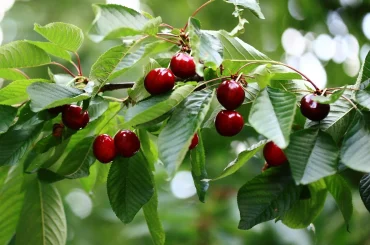Introduction
 A vibrant apple blossom tree covered in pink flowers under a clear blue sky—spring beauty at its peak.
A vibrant apple blossom tree covered in pink flowers under a clear blue sky—spring beauty at its peak.
There’s something magical about an apple tree in bloom—the soft pink and white blossoms, the sweet scent in spring air, and the promise of crisp, juicy apples. If you’re considering planting an apple blossom tree in your yard, you’re in for both aesthetic beauty and practical rewards. In this guide, we’ll explore everything you need to know about these stunning trees—from planting and care tips to addressing common concerns like brown spots inside apples.
What Is an Apple Blossom Tree?
An apple blossom tree is simply an apple tree known for its beautiful springtime flowers. While the blossoms are a visual treat, they’re also crucial in the pollination process that leads to fruit production.
Key Features:
- Blooms in early to mid-spring
- White to pink flowers
- Fragrant and pollinator-friendly
- Produces apples in late summer or early fall (depending on variety)
Best Apple Blossom Varieties for U.S. Gardeners
When choosing a tree, consider varieties that thrive in your USDA hardiness zone. Here are a few popular choices:
🍎 Honeycrisp
- Cold-hardy and sweet
- Crisp texture, great for snacking
🍎 Fuji
- Long bloom time
- High yield, delicious flavor
🍎 Granny Smith
- Tart flavor, good for baking
- Resistant to many pests
Pro Tip: Always choose disease-resistant cultivars for easier maintenance and a healthier tree.
Planting an Apple Blossom Tree: Step-by-Step
Getting started is easier than you might think. Here’s how to plant your apple tree for the best results:
1. Choose the Right Spot
- Full sun (at least 6–8 hours daily)
- Well-drained soil with good air circulation
- Avoid frost pockets and low-lying areas
2. Prep the Soil
- pH between 6.0 and 6.8
- Mix in compost or well-rotted manure
- Ensure proper drainage (avoid soggy spots)
3. Planting Instructions
- Dig a hole twice as wide as the root ball
- Place the tree with graft union 2–3 inches above soil level
- Backfill and water thoroughly
- Add mulch around the base (not touching trunk)
Caring for Your Apple Tree in Bloom
Once your tree is established, proper care ensures healthy growth and a bountiful harvest.
Watering
- Deep water weekly in dry seasons
- Avoid overwatering (root rot risk)
Fertilizing
- Use a balanced fertilizer in early spring
- Avoid high-nitrogen fertilizers (can delay flowering)
Pruning
- Prune in late winter to early spring
- Remove dead/diseased branches
- Shape the canopy for air flow and light penetration
Pollination Support
Most apple trees need cross-pollination from a different variety nearby. Consider planting at least two compatible trees or ensure there are flowering crabapples nearby.
Apple Tree in Bloom: What to Expect

Your apple tree in bloom typically flowers in early to mid-spring depending on your region and variety. Here’s what to expect:
- Buds open into pink or white blossoms
- Blossoms last about 1–2 weeks
- Peak bloom time is a vital pollination window
Pollinators like bees and butterflies are your best friends during this period. Consider planting wildflowers nearby to attract them.
Common Apple Tree Problems: Brown Spots Inside Apples
Not every apple will be perfect. One common issue home gardeners face is brown spots inside apples. This can be caused by:
🍏 Bitter Pit
- Calcium deficiency
- Prevent by maintaining balanced soil nutrients
🍏 Internal Browning
- Often caused by improper storage
- Avoid by harvesting at peak ripeness and storing apples in a cool, dry place
🍏 Fungal or Insect Damage
- Codling moths or fungal infections
- Use organic sprays or introduce beneficial insects
🚫 Important: Always inspect fruit before storing. Compost or discard any with interior damage to avoid spreading rot.
Benefits of Growing an Apple Blossom Tree
Besides the stunning spring display, here’s why homeowners love having these trees:
- Edible fruit: Save on store-bought apples
- Increased property value: Great landscaping appeal
- Wildlife support: Birds and pollinators love them
- Seasonal interest: Beautiful in all four seasons
Final Thoughts
Planting and caring for an apple blossom tree brings more than just seasonal beauty—it’s a long-term investment in your landscape, your diet, and your connection to nature. From watching your apple tree in bloom in spring to biting into a fresh apple in fall, the journey is rewarding. Just remember to stay on top of care routines and address issues like brown spots inside apples early on.
Ready to get started? Your dream garden might just begin with a single apple blossom tree—explore more seasonal plant care tips at seasonalplant.com.
FAQs
When do apple blossom trees bloom in the U.S.?
Apple blossom trees typically bloom in early to mid-spring, depending on the climate zone. In warmer southern states, blooming may start as early as March, while in northern areas, it may occur in April or May.
Do all apple trees produce blossoms?
Yes, all healthy apple trees produce blossoms. These blossoms are essential for fruit development and attract pollinators like bees during the spring season.
How long do apple blossom flowers last?
Apple blossom flowers usually last about 1–2 weeks. Their lifespan can be shortened by rain, wind, or sudden temperature drops.
Can I grow an apple blossom tree in a small garden?
Absolutely! Dwarf apple tree varieties are perfect for small gardens or even containers. They offer beautiful blossoms and fruit without taking up too much space.
Why are there brown spots inside my apple?
Brown spots inside apples can be caused by internal browning, a condition often due to storage issues, bruising, or fungal diseases. It’s not always harmful but may affect the texture and flavor.


